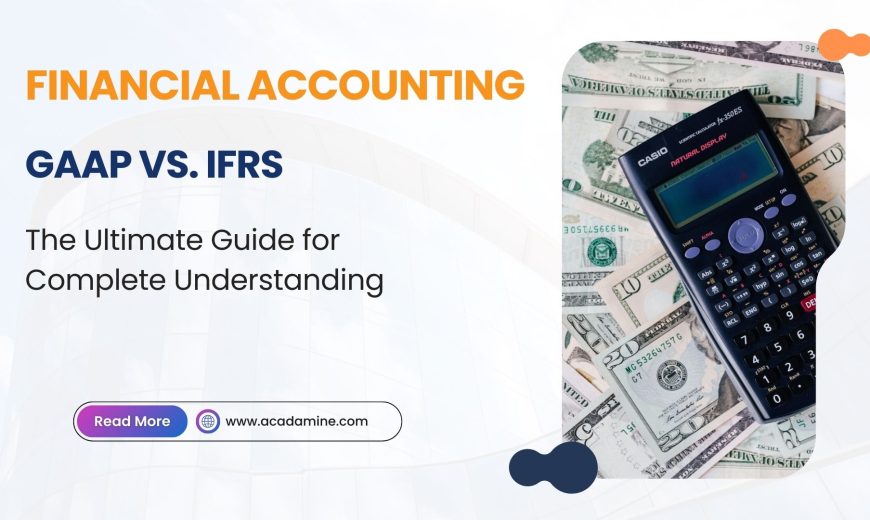
Accounting often viewed as both an art and a science, it overlaps the line between systematic knowledge and creative judgment. While accounting as a discipline shares specific characteristics with pure sciences—its dependance on structured, organized principles—it is far from a rigid science. Instead, accounting incorporates flexibility and adaptability, with professionals often called upon to use their judgment to navigate complex financial landscapes. Accounting operates within art and science, guided by evolving principles, standards, and practices.
Understanding the Science of Accounting
At its core, accounting can be classified as a science due to its organized and systematic body of knowledge. This knowledge is built upon foundational principles governing how financial transactions are recorded, reported, and analyzed. Much like science, accounting is based on structured, predictable rules, though it often allows for interpretation and flexibility in specific contexts. This dual nature will enable it to serve practical regulatory purposes and more flexible, creative business functions.
Accounting principles are the backbone of this structured knowledge. These principles serve as guidelines that govern how financial transactions are to be reported. They ensure that businesses and individuals approach financial reporting uniformly and consistently. The uniformity allows for comparability across companies and sectors, making it possible to assess the economic health of organizations in a standardized way.
The Role of Accounting Principles in Financial Reporting
Accounting principles or standards are essential in maintaining the integrity and reliability of financial reporting. These standards set the framework for financial transactions to be conducted, recorded, and presented in financial statements. Without such principles, financial information could become inconsistent, inaccurate, or misleading, undermining stakeholders’ ability to make informed decisions.
Accounting principles bring about consistency and transparency, which play a vital role in compliance with regulatory requirements. Financial transparency is essential for publicly traded companies, which must disclose their financial statements annually. These statements, subject to rigorous scrutiny, must adhere to established accounting standards to ensure accuracy and consistency. Standardized accounting methods are necessary for internal decision-making and external stakeholders like investors, creditors, and regulatory bodies to evaluate a company’s financial health and investment potential.
The Importance of Financial Statements in Business Decision-Making
Every publicly traded company is obligated to release its financial statements annually. These statements are used by a wide array of stakeholders—including investors, banks, creditors, and analysts—to evaluate the company’s financial performance and health. The information provided in these statements helps stakeholders make crucial decisions regarding investments, lending, and other financial engagements.
Financial statements must present comparable information in a consistent format to be useful in these evaluations. This uniformity enables stakeholders to compare the economic health of different companies within the same industry, making it easier to assess which companies offer the best investment opportunities or financial stability. This is where accounting principles play a pivotal role, ensuring that the financial statements follow a set structure that is recognized and understood universally.
GAAP: The Foundation of Financial Reporting in the United States

Generally Accepted Accounting Principles (GAAP) are among the most well-known accounting standards. These are a set of rules and guidelines that dictate how financial transactions should be recorded and reported in the United States. GAAP ensures that financial statements are clear, complete, and consistent, allowing for accurate business comparisons.
What is GAAP?
At its core, GAAP can be understood simply as a set of “rules that govern accounting” or the “rules for the preparation of financial statements.” In a more comprehensive sense, GAAP refers to a commonly accepted and recognized set of standards, practices, and procedures designed to guide corporate accounting and financial reporting in the United States.
The Purpose of GAAP
GAAP’s primary purpose is to enhance the clarity, consistency, and comparability of financial statements. By providing a standardized set of rules, GAAP ensures that financial information is communicated without ambiguity and in a format that allows easy comparison across businesses and industries. This facilitates better decision-making for investors, creditors, and other stakeholders who rely on these financial reports to assess a company’s performance.
Key Features of GAAP

GAAP’s features are integral to its role in the accounting landscape. These features ensure that financial reporting adheres to standardized practices and is flexible enough to adapt to changing business needs.
- Generally Accepted: GAAP is universally recognized and accepted within the United States as the standard for financial reporting.
- Uniform and Standardized: GAAP ensures that financial statements are prepared uniformly, producing consistent results that can be easily compared across companies.
- Artificial: Unlike laws of nature, GAAP principles are derived from human experience and are continuously adapted to meet evolving business practices and challenges.
- Flexible: While GAAP provides a structured framework, it is flexible enough to adapt to changes in business practices, new financial products, and shifts in the economic landscape.
The Origins of GAAP
The origins of GAAP can be traced back to the aftermath of the 1929 Stock Market Crash and the subsequent Great Depression. In the wake of these events, it became clear that financial reporting practices in some publicly traded companies were contributing to economic instability. As a result, the federal government began collaborating with professional accounting bodies to establish transparent and standardized financial reporting practices.
The Securities Act of 1933 and the Securities Exchange Act of 1934 were two key pieces of legislation that helped establish GAAP. Over time, the standards and principles of GAAP evolved, influenced by best practices and industry needs. Today, GAAP continues to evolve in response to emerging business practices, technological advancements, and changes in the global economic environment.
Developing Authority: FASB and GASB
In the United States, GAAP is primarily developed and maintained by the Financial Accounting Standards Board (FASB) and the Governmental Accounting Standards Board (GASB). The FASB, established in 1973, is an independent private-sector organization responsible for developing and communicating GAAP to the public. It does so through a transparent process that involves input from various stakeholders, ensuring that the standards reflect the needs and realities of the business world.
On the other hand, the GASB, established in 1984, is responsible for developing accounting standards for state and local governments, further expanding GAAP’s reach.
IFRS: A Global Alternative

While GAAP is widely used in the United States, the International Financial Reporting Standards (IFRS) are the global standard for accounting. IFRS is used by more than 110 countries worldwide and provides a uniform framework for financial reporting across international borders.
The Role of IFRS
IFRS, developed and maintained by the International Accounting Standards Board (IASB), offers a global approach to financial reporting. Its primary goal is to ensure consistency and transparency in financial statements across different countries, making it easier for investors, creditors, and other stakeholders to compare financial data from companies worldwide.
Key Differences Between GAAP and IFRS
While both GAAP and IFRS serve the same fundamental purpose of ensuring consistent and transparent financial reporting, there are key differences between the two systems.
| Difference | GAAP | IFRS |
| Difference | Set of Accounting Principles, Standards, and Procedures. | Global Set of Accounting Standards |
| Acronym | Generally Accepted Accounting Principles | International Financial Reporting Standards |
| Scope/ Jurisdiction Geographic Applicability | Primarily Used in the United States | Global Adoption: IFRS is used by many countries outside of the United States. |
| Authority Issuing Body | Developed by the Financial Accounting Standards Board (FASB) | Developed by the International Accounting Standards Board (IASB) |
| Approach | More Rules Based | More Principles Based |

Approach
Despite these differences, the FASB and IASB have been collaborating to converge the two standards. The goal is to reduce the discrepancies between GAAP and IFRS to make it easier for organizations to operate internationally or to invest across borders. However, full convergence has not been achieved, and some differences remain.
Evolution of GAAP and IFRS
Both GAAP and IFRS are dynamic frameworks that continue to evolve. FASB regularly updates GAAP to reflect new business practices, technological advancements, and economic changes. Similarly, the IASB updates IFRS to accommodate new developments in the global business environment.
For businesses operating internationally, staying informed about these updates and understanding the similarities and differences between GAAP and IFRS is crucial. By doing so, they can make more informed decisions about financial reporting, investments, and cross-border operations.
Conclusion
Accounting principles like GAAP and IFRS play a pivotal role in ensuring financial information’s transparency, accuracy, and comparability. While GAAP remains the standard in the United States, IFRS offers a global solution for businesses operating across borders. Both frameworks are continually evolving to meet the changing needs of the business world, and staying informed about these changes is essential for companies seeking to navigate the complexities of global financial reporting. Understanding the underlying principles of these accounting standards helps businesses maintain compliance and enables investors and other stakeholders to make well-informed decisions.


